Sustaining an open-source ecosystem is extra crucial than ever in a world the place virtually all software program relies on open-source code.
The dissemination of significant open-source infrastructure is unsustainable if it’s depending on centrally hosted platforms and firms. Utilizing such centralized companies is incompatible with the values of the free and open-source ecosystem and threatens its survival.
Nevertheless, a decentralized Git internet hosting protocol was created as an alternative choice to remove intermediaries and create a secure, efficient, and safe peer-to-peer ecosystem.
This put up will talk about easy methods to construct and push tasks to a web3/decentralized Git internet hosting protocol: Radicle.
Stipulations
Ensure that to have Node/NPM put in in your pc. To put in, click on here for a information.
What Is a Git Internet hosting Protocol?
Git protocol is a novel daemon that comes included with Git and listens on a selected port (9418) to offer a service corresponding to SSH, however with none authentication.
It’s the quickest out there for file transfers. It employs the identical data-transfer method as SSH, however with out encryption and authentication prices.
We’ll probably wish to arrange a Git Daemon to serve our undertaking if we’re offering loads of site visitors for a public undertaking or internet hosting an enormous undertaking that does not require consumer authentication for studying entry.
What Is Radicle?
Radicle is an open, protocol-based, decentralized coding collaboration community. It permits builders to collaborate on code with out counting on third events.
Radicle was created to imitate the capabilities of centralized code collaboration platforms whereas sustaining Git’s peer-to-peer nature, extending the advantages of distributed model management to remove intermediaries, and making a secure, efficient, and safe peer-to-peer ecosystem.
Challenge Setup and Set up
We’ll set up the Radicle CLI to deal with identification and work together with Git to push code to the community.
Set up utilizing Cargo on Linux and x86_64 macOS
Set up the Radicle CLI by working the next command:
cargo set up --drive --locked --path .
Or, immediately from our seed node:
cargo set up --drive --locked --git https:
Set up Utilizing Homebrew
Set up the Radicle CLI by working the next command:
brew faucet radicle/cli https:
brew set up radicle/cli/core
After set up, use the next command to confirm the set up:
rad
We should always have one thing just like what we now have under:
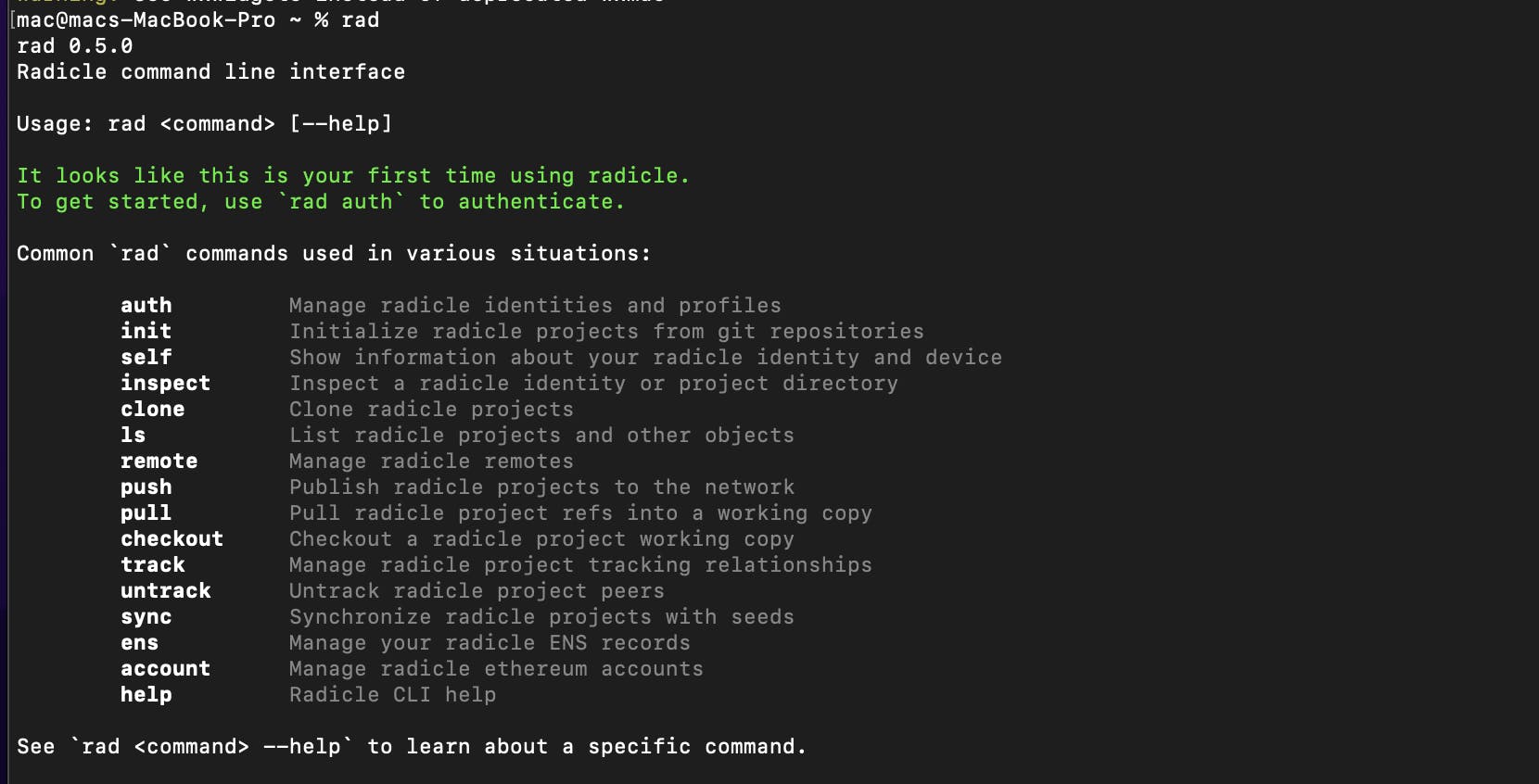
Create Radicle Identification
To work together with the Radicle community, we’d like an identification, which we will generate with rad auth.
After selecting a show title and setting a passphrase, the Radicle CLI generates two distinctive identifiers:
-
Peer IDidentifies our machine and the code you publish on the Radicle community and is secured with anEd25519keypair. -
Private URN, which identifies the consumer throughout units.
Subsequent, we’ll run the next command:
rad auth
We should always have one thing related to what’s proven under:
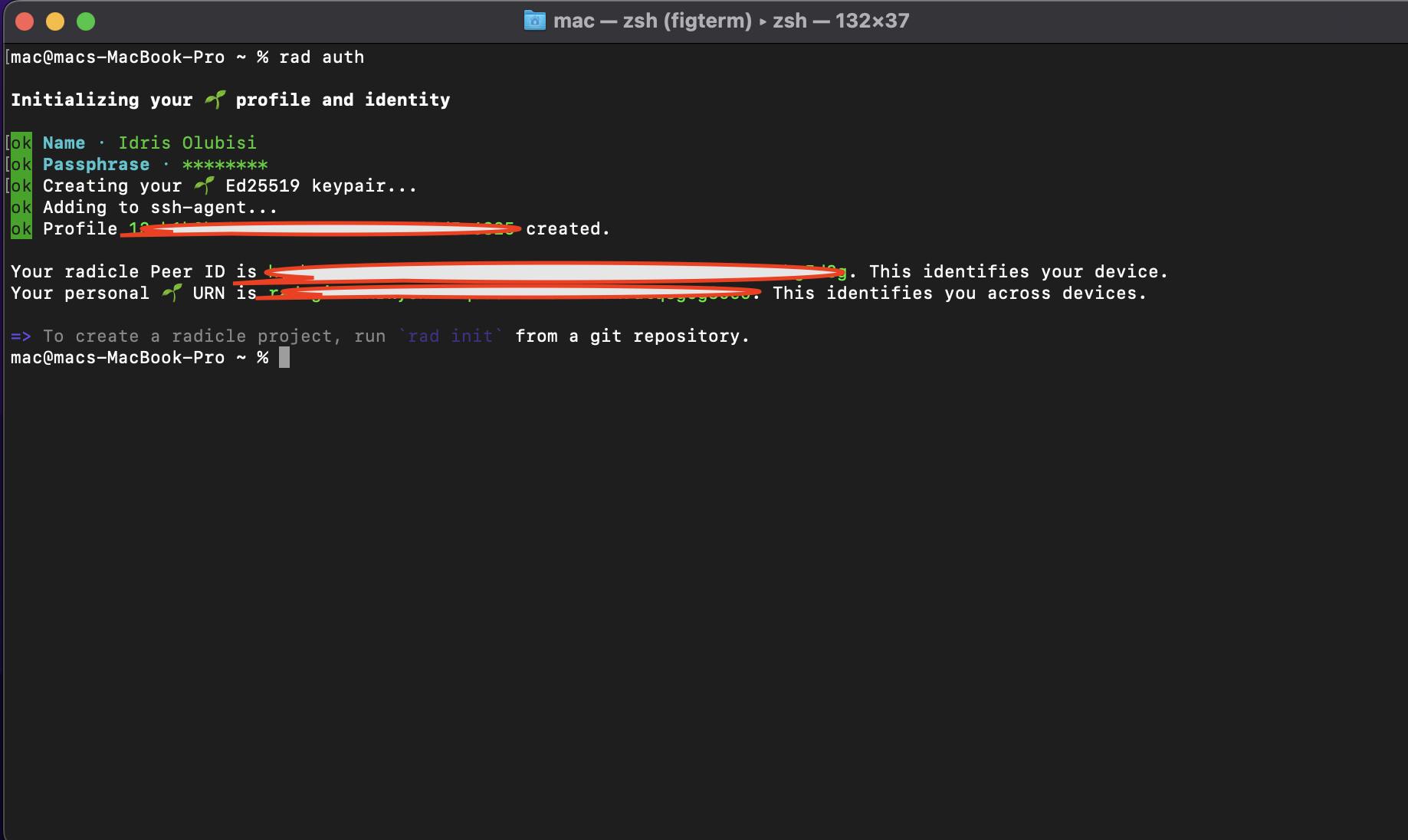
In keeping with the documentation, there’s presently no technique to retrieve a misplaced or forgotten passphrase, so please retailer it safely!
Constructing a React Utility
It is time to get our web site up and working!
To create a brand new undertaking, go to a listing of your selection and use the npx create-react-app command.
This command creates a React.js undertaking.
To put in the dependencies, copy and paste the instructions under:
npx create-react-app <undertaking title>
cd <undertaking title>
You’ll then obtain a message with directions to hook up with your undertaking and execute it domestically utilizing the next command:
npm begin
React.js will now begin a hot-reloading growth setting that’s accessible by default at http://localhost:3000.
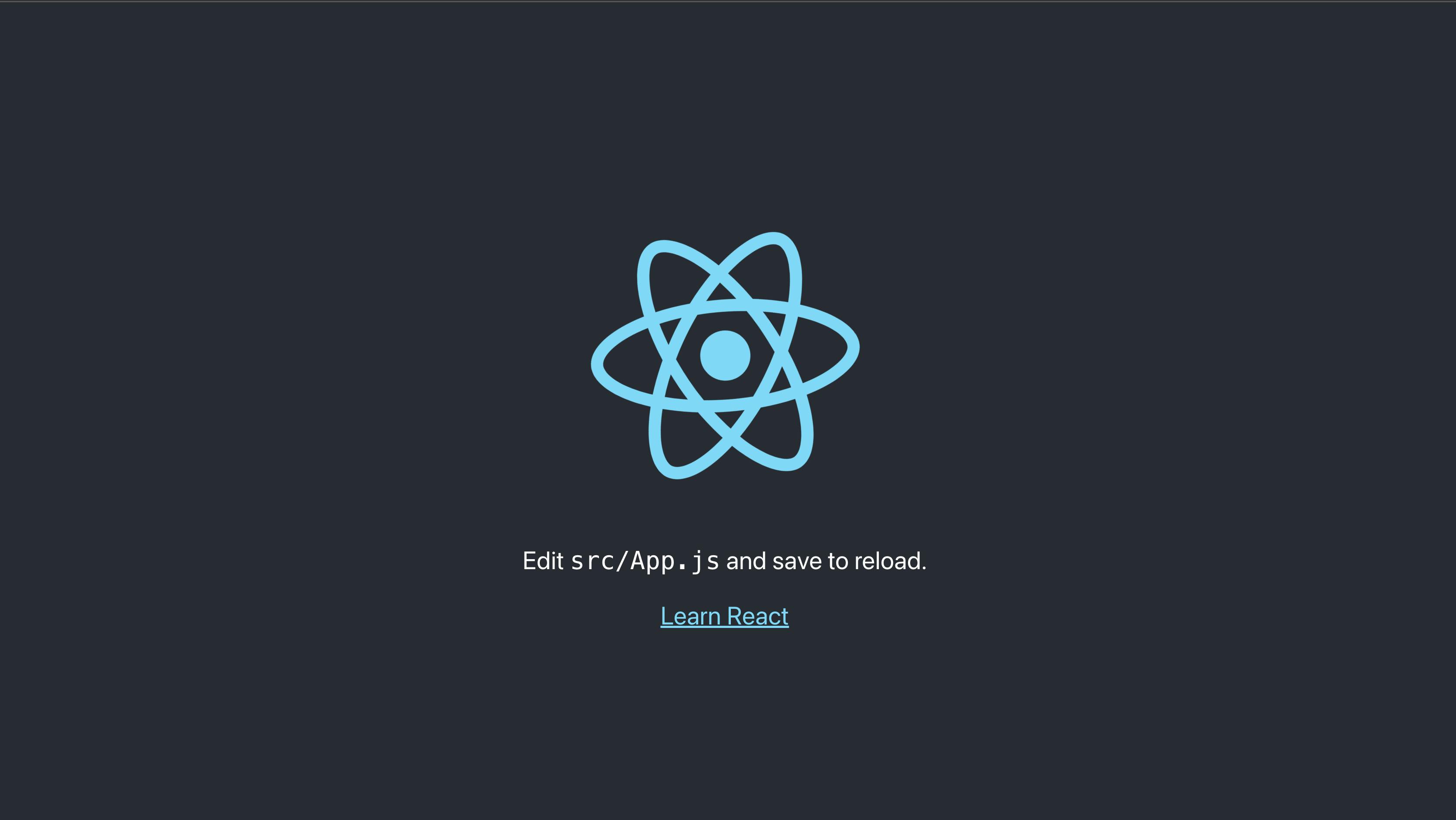
This can be a easy software; we will push any undertaking to the decentralized Git internet hosting protocol.
Deploying to a Git Internet hosting Protocol Utilizing Radicle
We will create a Radicle undertaking from any present Git repository and publish it on the Radicle community utilizing two CLI instructions — rad init and rad push.
Tasks embody all Git repository information, revision historical past, and Radicle-specific metadata, together with names, descriptions, and delegates’ info.
Initialize a Challenge
Navigate to your undertaking listing domestically, and run the next command:
rad init
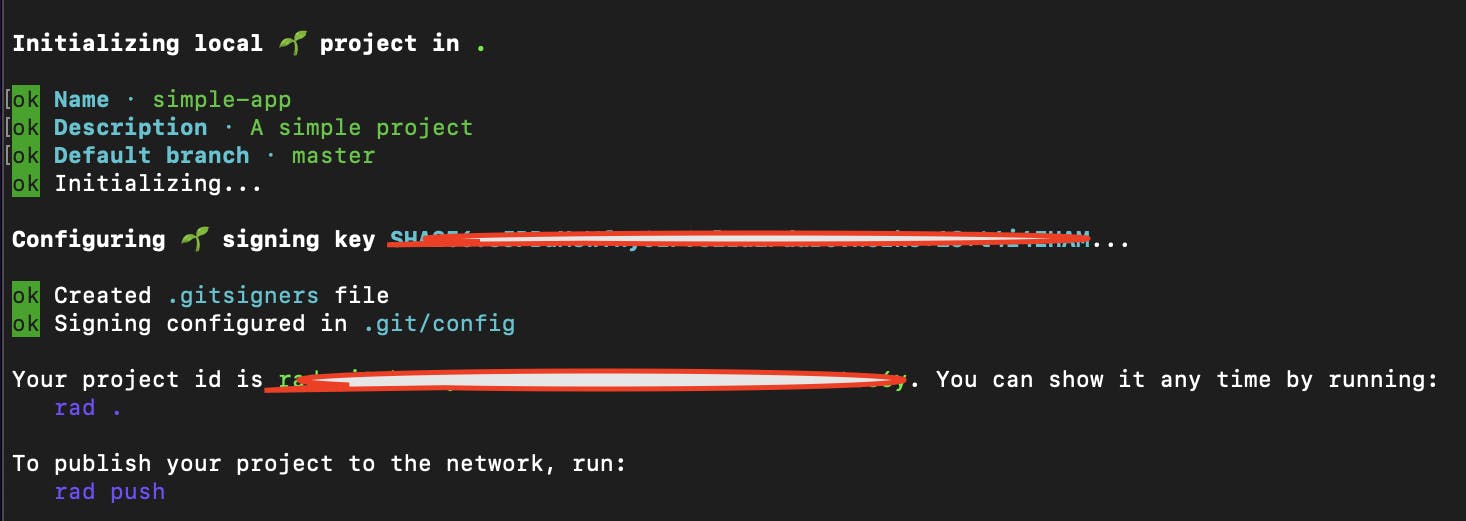
rad init created a undertaking URN for our undertaking and related our Peer ID with it to share it on the Radicle community.
Pushing Our Challenge to the Radicle Community
The Radicle CLI makes use of peer-to-peer seed nodes, which act as replicas of the Radicle undertaking knowledge and are accessible over the web through the web interface.
Radicle offers three default seed nodes, all of which have the identical performance as listed under:
pine.radicle.backyardwillow.radicle.backyardmaple.radicle.backyard
Run the next command to push your undertaking:
rad push
When you run it in a brand new undertaking, the CLI will ask which seed node to sync it with.
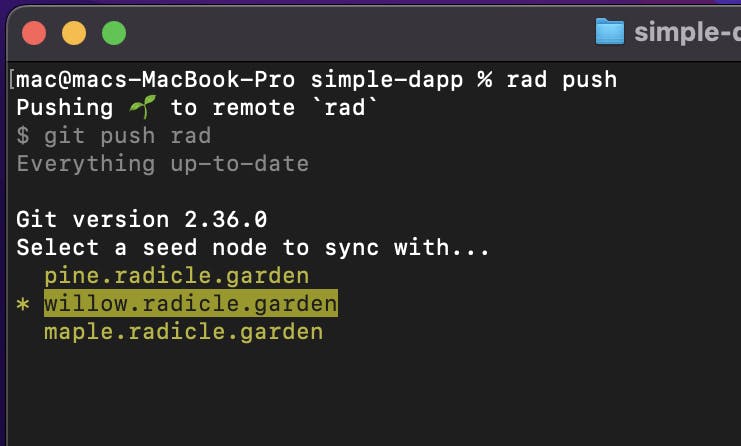
Subsequent, we’ll see the URL our undertaking is situated at on the CLI.
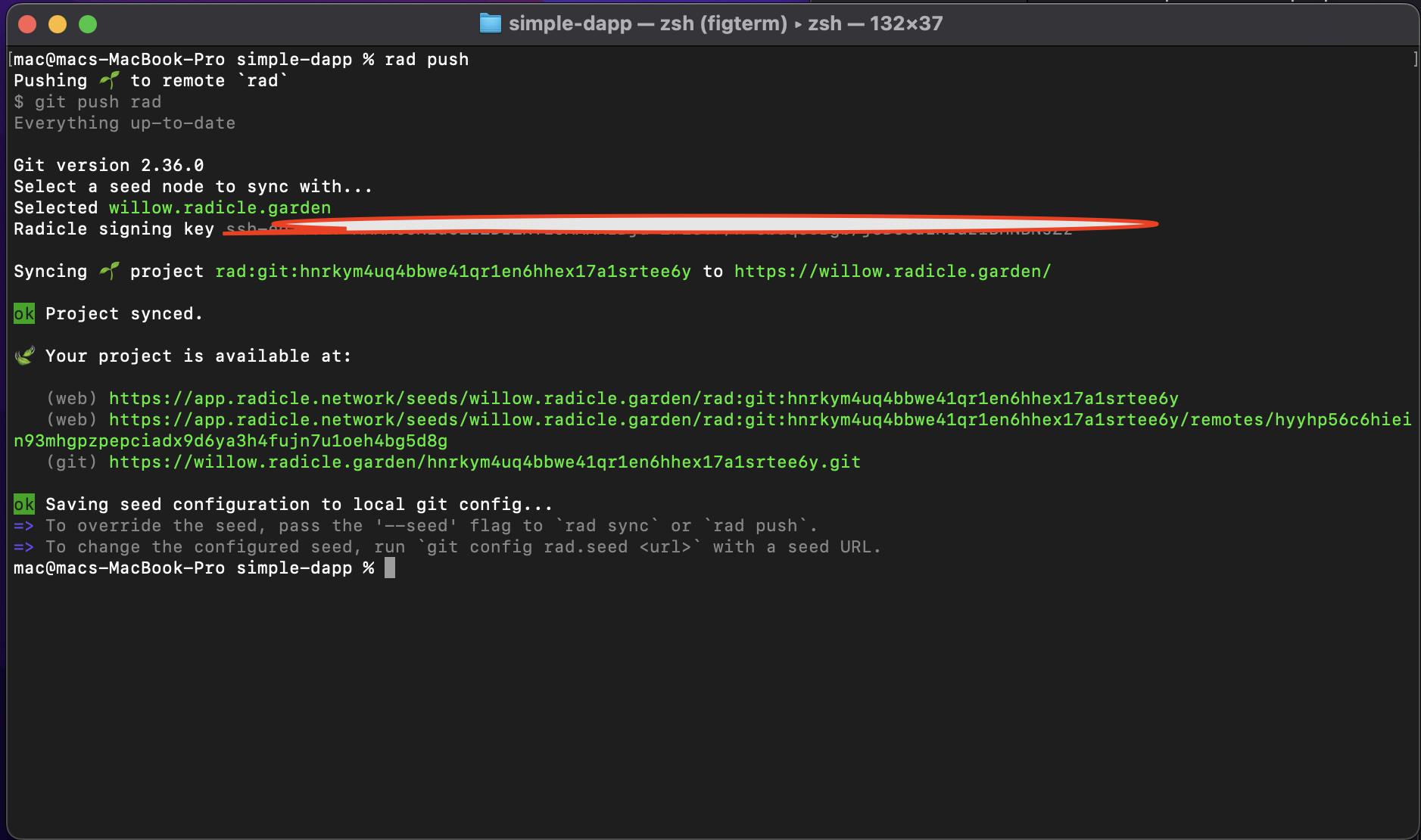
After we click on on the URL proven on the CLI, on this case,https://app.radicle.community/seeds/willow.radicle.backyard/rad:git:hnrkym4uq4bbwe41qr1en6hhex17a1srtee6y, we’d see one thing like this:
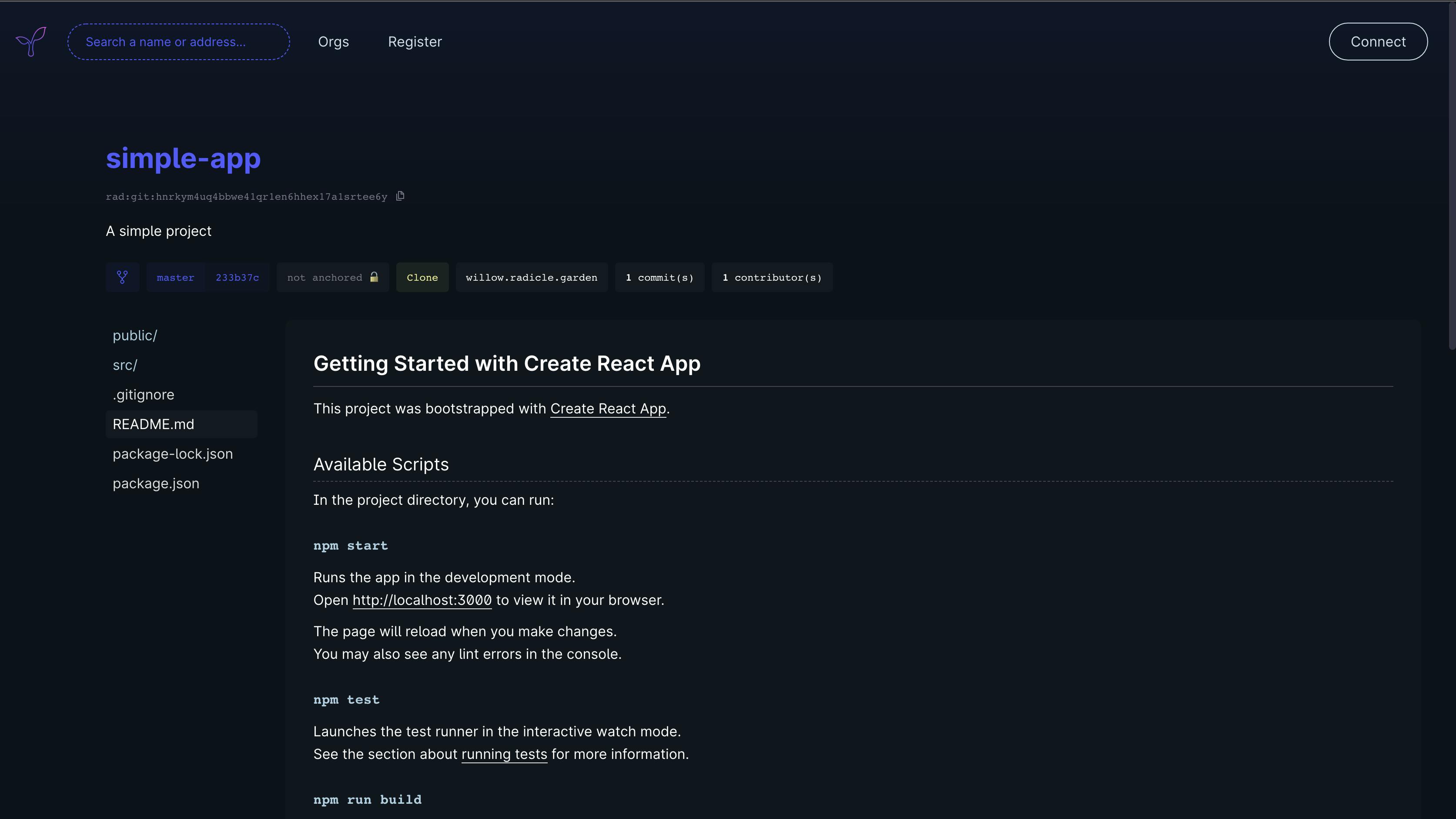
Cloning a Challenge
We have to clone the undertaking domestically to start out collaborating on a undertaking.
When utilizing the Radicle net interface, click on on the “Clone” button to show a dropdown with the entire rad clone command, which you’ll be able to copy and paste into your terminal.
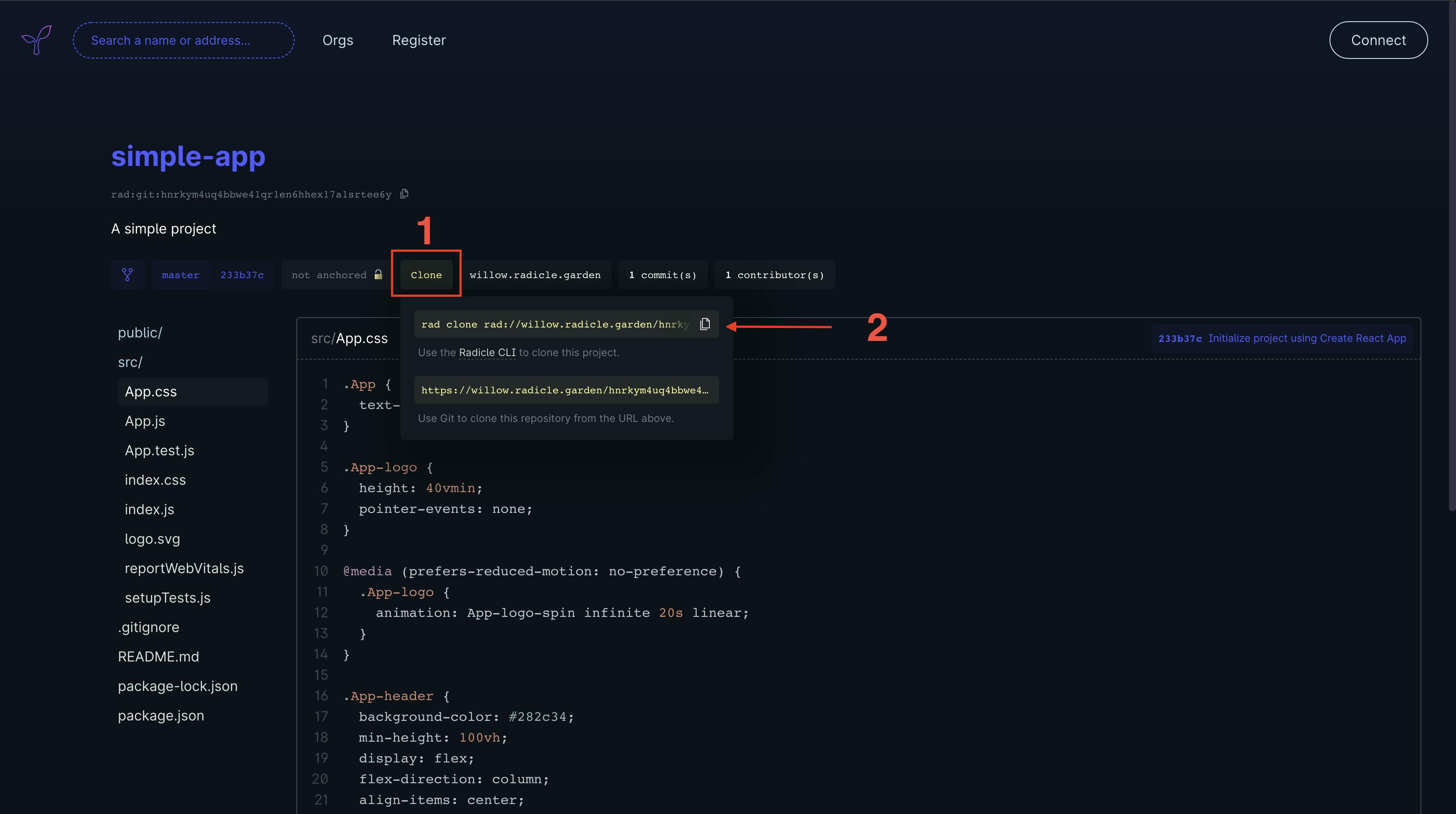
We will additionally use the git command to clone our undertaking utilizing the next command:
git clone <URL>
Subsequent, copy the URL from the Radicle interface under:
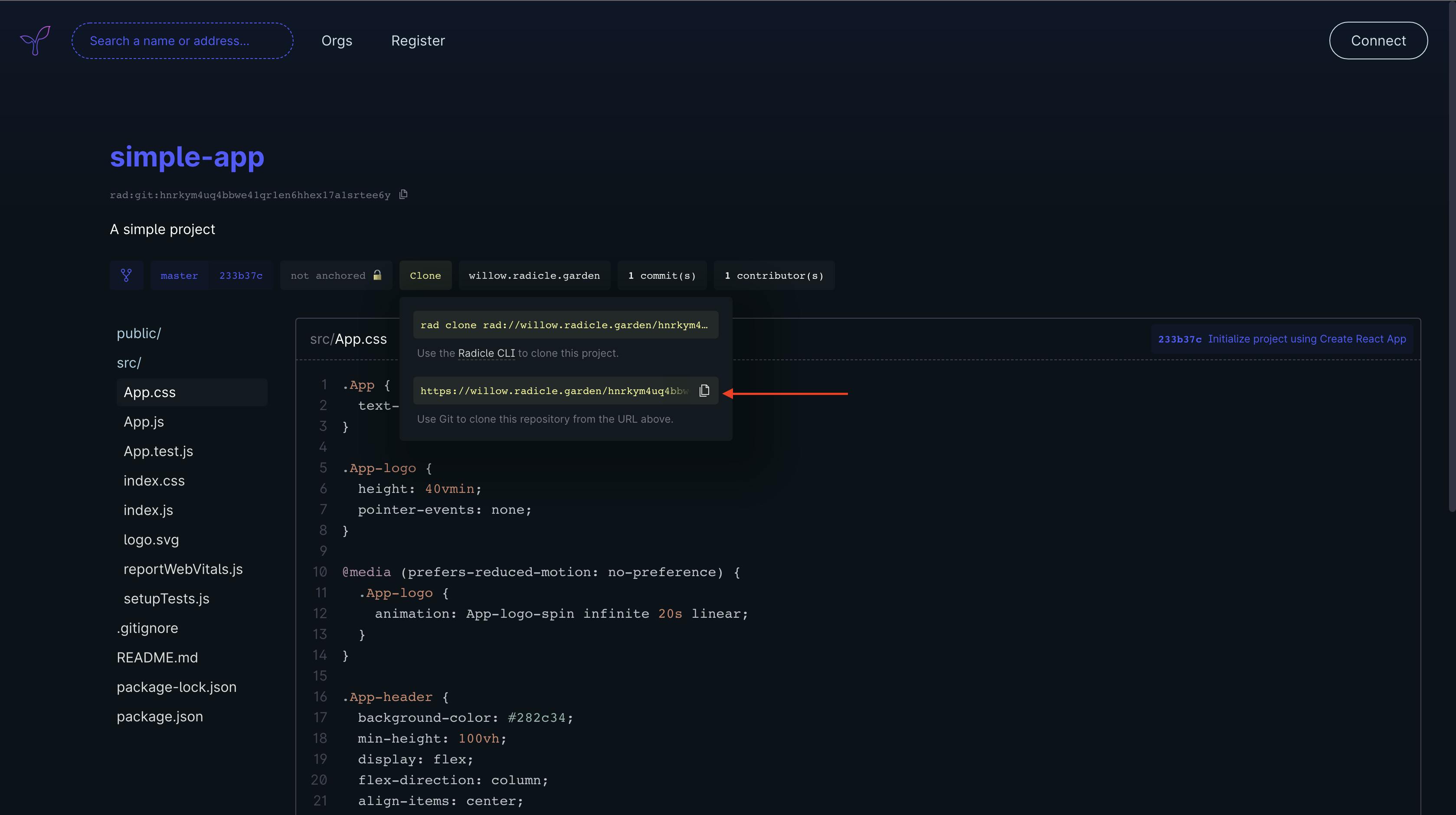
Committing/Updating an Current Challenge
Replace the README file in your undertaking with the next code:
# Getting Began with Create React App pushed to Radicle
This undertaking was bootstrapped with [Create React App](https://github.com/fb/create-react-app).
Commit your modifications and push the updates to your present repository on a decentralized Git internet hosting protocol with the next instructions:
git add .
git commit -m "Replace readme"
rad push
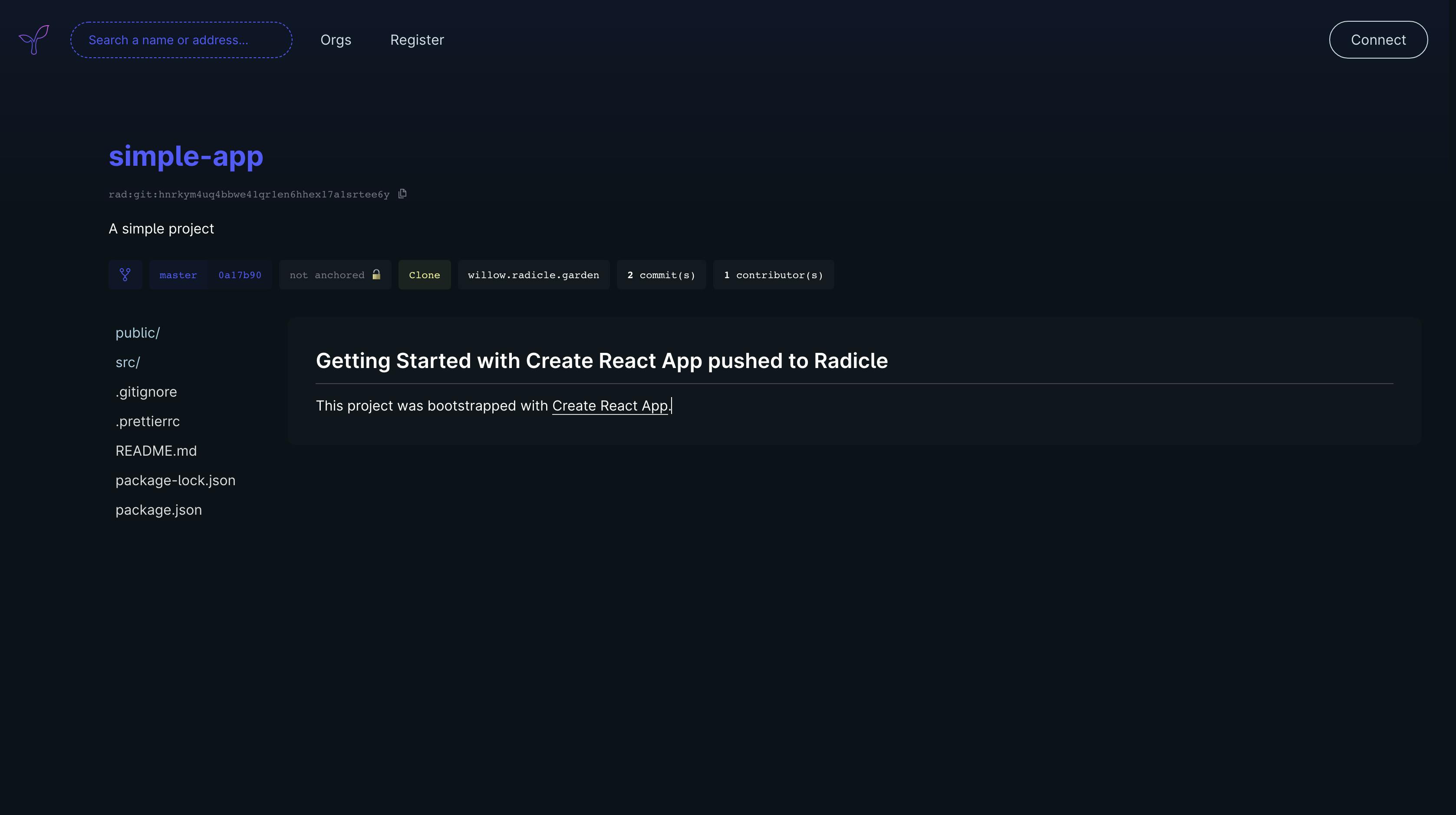
Accessing Present Profile Info
Entry your profile info on the CLI by working the next command:
rad self
We’ll have one thing just like what we now have under, which exhibits details about the presently logged-in consumer profile:
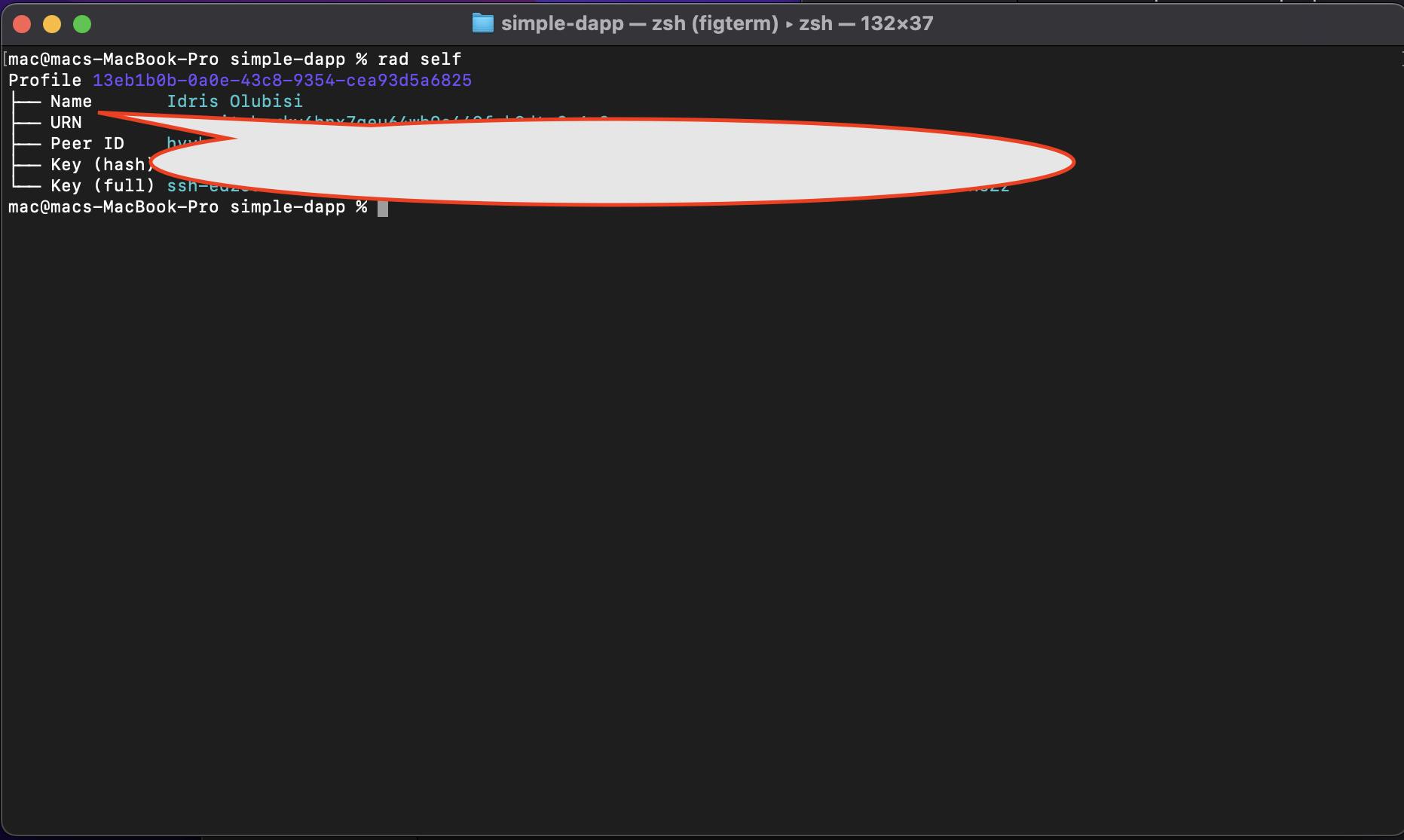
Right here’s the official documentation to be taught extra about Radicle’s decentralized Git internet hosting protocol.
Conclusion
On this article, we discovered:
- Learn how to create a Radicle identification,
- Learn how to publish a undertaking to the Radicle community,
- Learn how to clone a undertaking from the Radicle community,
- Committing/Updating an present undertaking, and
- Accessing present Radicle profile info.
This text is part of the Hashnode Web3 blog, the place a staff of curated writers are bringing out new assets that can assist you uncover the universe of web3. Test us out for extra on NFTs, DAOs, blockchains, and the decentralized future.








